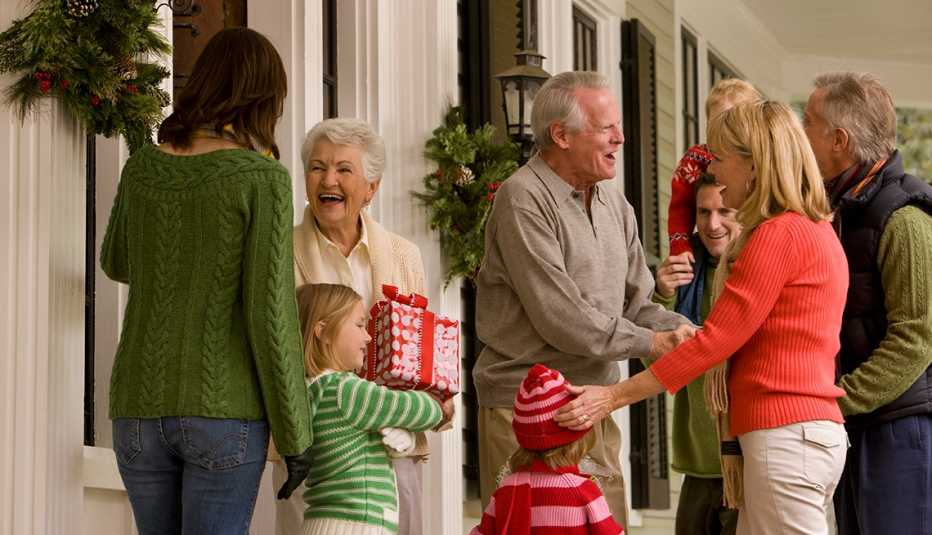AARP Hearing Center


Susan Goodfellow isn’t going to Denver for Christmas to see her daughter and her fiancé, who are both unvaccinated. Goodfellow and her husband didn’t make it there for Thanksgiving either. Her doctor told her not to do it.
Goodfellow, 72, of Georgetown, Texas, didn’t have to wrestle with the decision facing so many this holiday season.
“He said I could probably go as long as I didn’t get out in the general public too much,” she says. “But all of a sudden, Denver (coronavirus) spiked ... and then I couldn’t go.”
The couple stayed home by themselves at Thanksgiving and will do the same for Christmas.
Evaluate your risk tolerance this holiday
Ask yourself a few questions in order to think through whether an event is worth attending:
Are you fully vaccinated and boosted? If so, it’s much safer to gather with others, even with the omicron variant circulating.
Do you have underlying health conditions? If that's the case, consult your doctor about how to approach holiday gatherings.
Do you know whether the people you’re gathering with are vaccinated? If you don’t know their status, especially when it comes to younger children, consider precautions like masking indoors to minimize exposure.
How big is the gathering you want to attend and what is the setting? Determine what size gathering feels comfortable to you and whether you are open to indoor gatherings.
But for many, who aren’t deferring to the doctor, holiday season 2021 is all about risk assessment. No one wants a repeat of last year, when the Centers for Disease Control and Prevention recommended against gatherings because the COVID-19 vaccine wasn’t generally available. But this year, holidays haven’t been normal either.
Although many are vaccinated and boosted, people are weighing the risks of being in-person with loved ones, whether it’s holiday parties or family dinners. The calculations include pent-up demand to travel and see friends and family against the potential dangers of being around the unvaccinated, including children under 5 who are too young for a shot.
The omicron variant adds another wrinkle in the seemingly never-ending list of decisions that used to be so easy.
“This one is going to be tough,” says Lynn Bufka, a clinical psychologist from Silver Spring, Maryland. “It’s coming at a time of year when people gather to celebrate with family and friends. We know pretty clearly that not gathering with family and friends and foregoing our traditions also has a mental health impact. We’re recognizing that more as the pandemic continues — trying to balance the disease risk for COVID with well-being in decision-making at both the personal level as well as the community level.”
COVID makes social decisions difficult
These days there’s so much to ponder. Americans are struggling to make everyday life decisions during this lingering pandemic, according to a survey released this fall from the American Psychological Association, which Bufka helped develop as a senior director with the Washington, D.C.-based group.



































































More on home-family
What Did We Learn From Last Year's Pandemic Holidays?
Applying new lessons about what's most important about celebrating
Ideas to Help You Tech Your Halls
Digital ways to help you decorate for the holidays
Should You Plan Travel as the Pandemic Continues?
Some opt for 'trip stacking,' while weighing COVID-19 health risks at destinations around the world